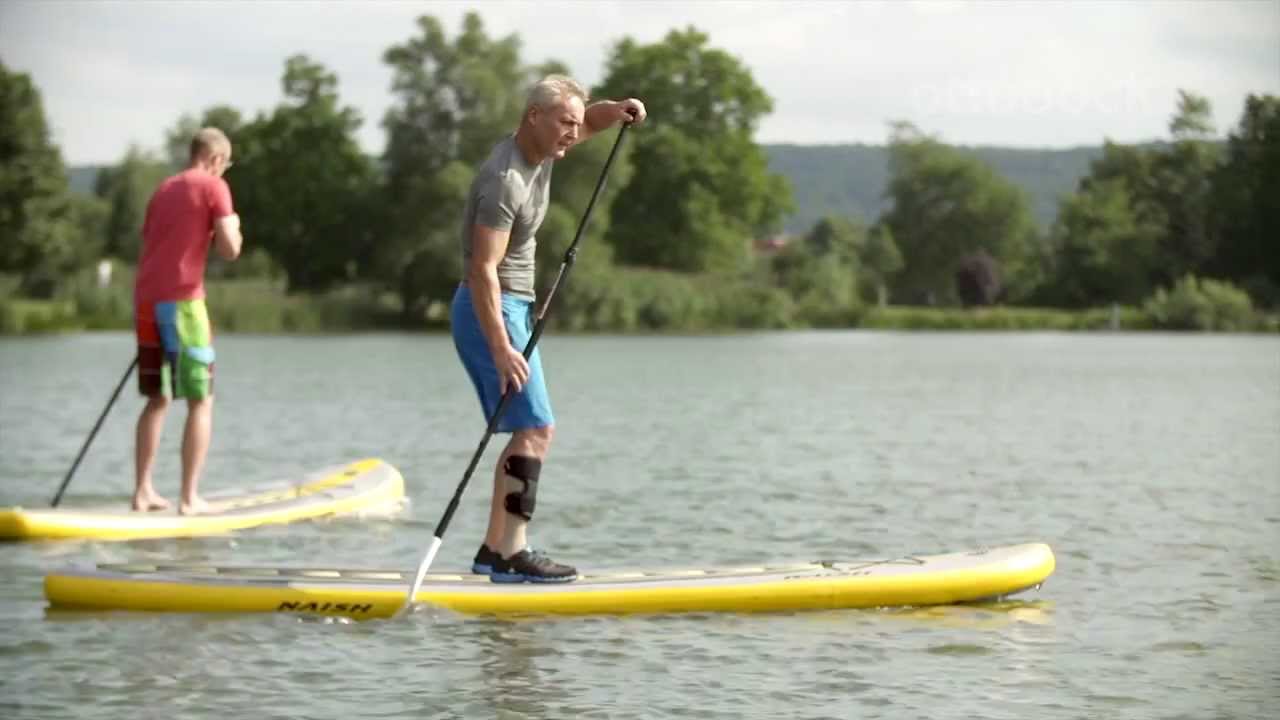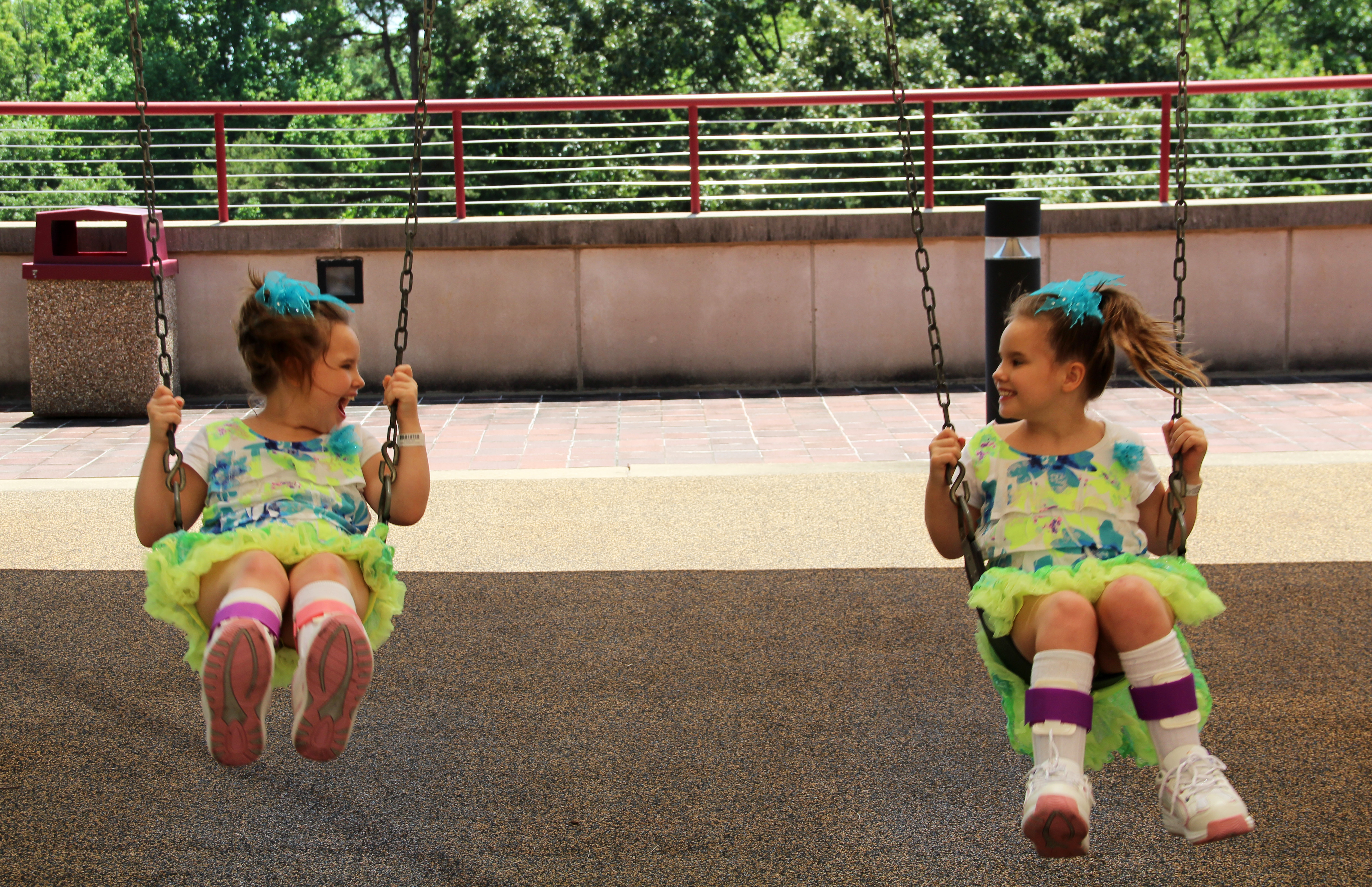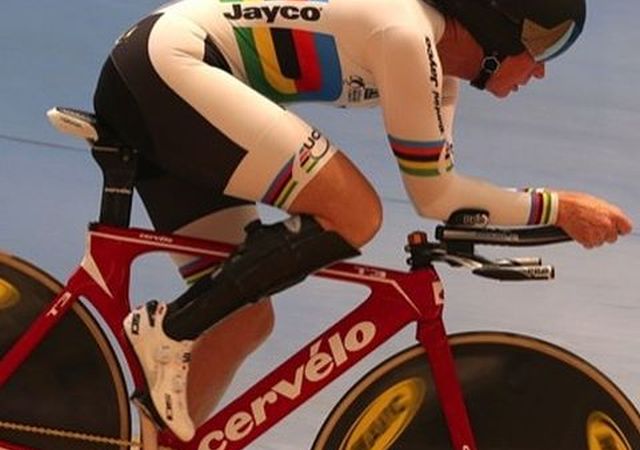Stepping up: Orthotic devices help boost physical activity levels
Children, youth, adults, and seniors
Improved mobility with ankle foot orthoses and other devices can help patients experience the multiple health benefits of increased physical activity. But aggressive activity goals— including the oft-cited target of 10,000 steps per day— may still be problematic for some device users.
By Larry Hand, Lower Extremity Review May 2017
Meeting benchmarks in physical activity guidelines is difficult enough for some able-bodied individuals, but it can be an even bigger challenge for people who require orthotic devices to improve mobility.
In 2008, the US Department of Health and Human Services (HHS) issued its Physical Activity Guidelines for Americans.[1] The guidelines include:
- For children and adolescents, at least 60 minutes of moderate- or vigorous-intensity physical activity per day;
- For adults, 150 minutes per week of moderate-intensity physical activity or 75 minutes of vigorous-intensity physical activity;
- For older adults, as much physical activity as their health allows; and
- For adults with disabilities “who are able,” 150 minutes a week of moderate-intensity or 75 minutes of vigorous-intensity physical activity.
Although not a specific guideline, the popular recommendation of taking 10,000 steps a day is mentioned in the document as a target that can help individuals comply with the guidelines, if the walking is brisk enough.
Orthotic device users, however, often face challenges in meeting these recommendations, in relation to both the duration and intensity of physical activity, and some lower extremity clinicians say a stepped approach is needed when prescribing physical activity in this patient population. Some also say guidelines should be adaptive for individuals with disabilities.
James H. Rimmer, PhD, director of the University of Alabama at Birmingham Lakeshore Research Collaborative and director of the National Center on Health Physical Activity and Disability, was involved in writing the 2008 guidelines.
“In the report we basically said that, provided the right screening from the physician, people with a disability should be included in the guidelines. How they get there in terms of achieving them, that’s a real challenge because there are so many variables associated with the environment and also barriers associated with the individual who may have certain limitations,” Rimmer said. “Exercise instructors and clinicians often do not have the evidence or knowledge to prescribe the most appropriate and beneficial exercise for people with disabilities.”
The recommendations the HHS and others have outlined, though relevant, are not necessarily attainable for people who are extremely de-conditioned and highly sedentary, said Mark D. Peterson, PhD, MS, an assistant professor in the Department of Physical Medicine and Rehabilitation at the University of Michigan in Ann Arbor.
“We need to take a step back and look at what a person is doing and then find ways that we can introduce some activity in small doses that the person can achieve. And then over time we highly recommend that people continue to progress if possible, but attaining more of a minimalist perspective instead of a maximalist perspective in exercise,” Peterson said.
Peterson was a coauthor of a 2016 article [2] that recommended exercise prescriptions for individuals with cerebral palsy should begin with a “familiarization” period of low-dose training twice a week for two to four weeks.
“Even in the typically developed population, a lot of people don’t do a lot of physical activity. It may be because we are promoting extremely high volumes and higher intensities of exercise that are not palatable to most individuals,” Peterson added.

AFO stiffness can help optimize patient function. Otto Bock Photo
| Rational numbers |
Christopher Kevin Wong, PT, PhD, OCS, associate director of the Program in Physical Therapy at Columbia University Medical Center in New York City, told LER he thinks keeping track of step counts is a good approach to trying to meet guidelines.
“I think ten thousand [steps per day] is reasonable” for many individuals, said Wong, who was the first author of a 2014 pilot study on relationships between foot orthosis use, physical activity, and functional level in obese patients.[3] “Sometimes in a group of more disabled patients, four thousand or six thousand might be appropriate.”
In the pilot study, semi-custom foot orthoses were prescribed based on arch index measures to obese women (mean body mass index [BMI] 42.4), who were also participating in a weight-loss program. After one year, eight of nine women said they wore the orthoses more than 50% of the time, and no adverse events occurred, which suggests the foot orthoses were safe and comfortable.
Wong and colleagues also found that changes in the ability to walk a mile were strongly correlated with changes in the rates of orthosis use and reductions in BMI, but, because the women were also in the weight-loss program, the exact contribution of orthoses could not be determined.
“From a biomechanical perspective, the idea was that many people who are obese may also have lower extremity alignment problems that might make it more difficult to be active. The concept of corrective foot orthoses, or biomechanical foot orthoses, is that if you were to correct them more, they would be able to do more,” Wong said.
Unrealistic physical activity goals can intimidate patients with disabilities who may feel they are being set up to fail, he said.
“You set up a goal, like exercise three times a week at thirty minutes a shot, and people can’t really reach that because of life timing or because of their physical state,” Wong said. “Then they feel like they’re a failure or they feel like they can’t do it and are never going to be able to do it, and as a result they don’t do anything. I would prefer to have more reasonable, attainable goals. Then if you’re able to do more, that’s great.”

WalkOn Reaction AFO. Otto Bock photo
| More active, more engaged |
Many of the benefits of physical activity for individuals with disabilities are similar to the benefits for their able-bodied counterparts.
“Exercise has one of the most profound benefits to a number of body systems—circulatory, cardiac, neurological, renal,” Rimmer said. “You have to identify what system has a deficit, and then you have to create an exercise program to meet that deficit. When you talk about systems, you hear a lot about the cardiorespiratory system, which reduces your risk of heart attack and stroke. Strengthening activities involving the musculoskeletal system reduce your risk of fractures and injuries associated with falls. But most importantly, [physical activity] engages the individual in some sort of community-based network that provides enormous amounts of psychological well-being.”
John T. Brinkmann, CPO/L, an assistant professor of physical medicine and rehabilitation with Northwestern University Prosthetics-Orthotics Center in Chicago, concurred.
“Individuals who experience disability often identify mobility and independence as their primary goals. However, people do not usually move for the sake of moving—we usually move because of a specific reason or with a specific purpose,” Brinkmann said. “High levels of activity may allow individuals who are using an orthosis to participate in more activities and engage more with others in meaningful ways. It’s this participation that is often the real motivation for developing an increased capacity for more intense or prolonged activity.”

Hinged vs solid AFOs for cerebral palsy: No significant difference in gait. Greenville Shriners Hospital photo
| Proceed with caution |
However, increasing physical activity is not always the right thing to do. Clinicians need to consider the diagnosis, physical presentation, and comorbidities of each individual patient when making recommendations regarding activity, Brinkmann said.
“In general, it’s safe to say that more activity is better than less, but increased activity may increase the risk of injury for individuals with significant musculoskeletal injury or neurological deficit,” he said. “Additionally, conditions that require orthotic management of the lower limb rarely occur in isolation—other body parts and systems are almost always affected. In many cases cognitive function must be considered, since an individual’s ability to make sound decisions about their activity could be impaired. Assessing the individual’s motivation is important as well. Pressuring individuals in the wrong way or at the wrong time may actually discourage activity. All of these factors should be considered when developing goals and guidelines for patients.”
In some cases, there may actually be reasons not to encourage patients to exert themselves.
“If someone has a neurological problem related to diabetes and they need orthotic management, you have to be aware of the diabetes and possibly heart disease, so it’s not the mobility problem alone in isolation, it’s also their health in general,” Brinkmann said. “In cases of severe functional deficits, exertion and fatigue can increase the risk of falls, so encouraging higher intensity activity may actually be counterproductive. Simply walking at a self-selected speed and performing common activities of daily living is a sufficiently advanced goal for many users of lower limb orthoses.”
Generally, high levels of activity are less important than basic rehabilitation goals such as pain reduction, increasing strength, and improving balance, he said.
“The overall goal of rehabilitation is often an increase in basic mobility and independence, and in cases of extreme functional loss, high activity [as we normally think of it] is often not even an option,” Brinkmann said. “Another way to look at this issue is that for many individuals with significant physical impairment, just walking at a normal speed requires a level of effort that is comparable to an able-bodied individual participating in a session of intense exercise. For most of us, walking a normal speed does not constitute high activity, but for many of our patients it does.”
Other clinicians agreed that, for certain patients, step-count goals may be counterproductive.
“There’s a fair number of orthotic device users who are using those devices because of very specific pathology or impairment,” said Christopher Neville, PT, PhD, an associate professor of physical therapy at State University of New York Upstate Medical University in Syracuse. “If their goal is to try and meet some sort of activity guideline or step count guideline, they could actually increase damage or further the progression of some dysfunction.”
An important consideration for some patients may be the extent to which increasing physical activity is associated with pain, Neville said.
“Patients need to increase their activity for the health benefits that come with that. However, they’re doing that with increased pain, so then they feel like they have to limit that activity and let tissue heal and let joints recover,” Neville said. “They’ve gotten into a cycle of decreased activity, so then how do they get out of this vicious cycle? Potentially, if they could increase their activity without further increasing pain or damaging tissue, that would be really beneficial.”
In such patients, reducing activity in the short term can end up having long-term benefits, Wong said.
“Sometimes people feel like because they have challenges they should rest more and not do as much. I think that is a reasonable approach for a short-term period to become a little bit more capable,” he said. “But in the long term, more is generally better. I tell my patients, ‘If you want to be able to get up from the toilet when you’re eighty, you have to be more active.’”
Neville believes physical activity guidelines for individuals with disabilities should differ from those for able-bodied individuals, but he acknowledged the complexities involved.
“I’m not sure we can create a guideline that just becomes individually specified. Many orthotic device users likely need individualistic recommendations for activities,” he said.

This custom designed and manufactured AFO (Ankle-Foot Orthosis) was produced for Australian Paralympic cyclist Sue Powell. The carbon fibre design maintains correct ankle position and fits neatly within the cycling shoe. Momentum Sports and Rehabilitation, Australia
| Benefits of orthotic devices |
Orthotic devices, including ankle foot orthoses, can help individuals increase their physical activity levels.
Three of the most pertinent ways an orthotic device can help improve physical activity levels are by decreasing pain, improving mechanics, and changing sensory input, Neville said. Although clinicians typically think of orthotic devices impacting people in terms of function, those functional benefits can also translate to greater physical activity.
Orthotic devices can improve balance in many patients and may have other benefits that can help reduce the risk of falls, Rimmer said.
“You’ve got better alignment with the orthotic. It protects the bones. That protective factor allows one to feel more confident. It increases self-efficacy to exercise and [patients] have a more engaging experience, contingent upon not causing or reducing any type of injury or lasting pain,” he said.
For orthotic devices to improve physical activity, comfort is key, Wong said.
“If people are more comfortable, they’re more likely to do more activities,” he said.
And clinicians should also keep in mind that increasing activity level can occur in ways that can’t easily be quantified by a pedometer.
“One of the most rewarding things for any clinician is to hear their patient describing activities they are able to engage in as a result of the services the clinician has provided,” Brinkmann said. “The most meaningful for me have been when patients describe their increased independence, ability to interact with family and friends in social settings, or ability to pursue work that is meaningful to them.”
| Does age matter? |
Children can present challenges with regard to prescribing orthotic devices, but older age has its own considerations, particularly when it comes to making the transition from improved mobility to improved physical activity.
Some of the same issues that negatively impact physical activity in older adults can also make it more difficult to find an orthotic device that will help.
“Older adults have reduced overall mobility due to physiological changes in joint and soft tissue, as well as a greater number of medical conditions and [more] medication use,” Neville said. “A practical example that might be helpful is that many older adults may have difficulty donning an orthotic device such as a lace-up ankle brace, thus impacting prescription.”
Patient motivation can also be a factor.
“Probably the biggest difference is, generally speaking, with kids you’re trying to keep up with them. If you ask any clinician in prosthetics and orthotics they’ll say that kids are the hardest on their devices, because they’re constantly pushing their activity to the limit of what is possible for them, and we have to design an orthotic system that will hold up to that,” Brinkmann said. “With adults, the problem tends to be that we’re trying to motivate them to a higher level.”
However, he noted, age is just one of many factors—and not necessarily the most important one—to consider with regard to orthotic prescription and activity.
“The age of our adult patients is a factor to consider, but others have a much greater impact on function. Making assumptions based on age can result in inappropriate treatment recommendations, since these other, more important factors may be overlooked,” Brinkmann said. “We can’t assume that because someone is elderly they will function at a low level, or [perhaps more importantly] that a younger person’s function will be higher.”

Ankle foot orthoses for patients with weak dorsiflexion, Otto Bock photo
| Tracking progress |
Interest has been increasing in tracking the progress of orthotic device users, according to clinicians, especially in wearable devices that count the number of steps taken.[4,5]
“Activity monitoring has been getting a lot of attention in research and clinical practice, because the benefits of having this information are obvious. Having hard data on step count and intensity is much better than simply relying on patient reports of activity,” Brinkmann said.
However, Brinkmann and others noted many commercially available activity monitors are not accurate enough to track the subtle change in function common in many populations of lower limb orthosis users.
“One problem with some of the commercial step-count devices is they don’t pick up very short steps that might be common in a disabled population, and they may not pick up very slow steps,” Wong said. “Sometimes when the steps are not even, [this] can also confuse some of the commercial devices.”
But Wong and Brinkmann both observed that activity monitoring technology is continually improving in ways that are likely to benefit orthotic device users.
“In coming years, I think we’ll see significant advancements in these technologies that will enable clinicians to use them routinely to gather use and activity data,” Brinkmann said.
| Beyond fitness |
In many ways, experts say, the challenges related to physical activity in orthotic device users are similar to those of the general population—challenges that all clinicians should be attempting to address with their patients.
One concern is that patients may be focusing too much on the guidelines for moderate- or vigorous-intensity activity, and not enough on increasing levels of low-intensity activity as well, Rimmer said.
“What we really need to do is be out and about more frequently. It’s not just about thirty minutes of exercise in the morning and then sit for the rest of the day,” he said. “We do need a good thirty minutes of fitness, but then we need to get another ninety minutes in during the day of just general activity: low-intensity, movement-based activities. We’re woefully underselling and underutilizing the power of physical activity.”
Those lower-intensity activities may prove to be where orthotic devices can really make a difference, Rimmer said.
“There’s a biological benefit from moving regularly at certain intervals of the day, and that’s where an orthotic can help,” he said. “If a person feels safer and doesn’t have any pain, it facilitates much greater use of that limb, and they’re going to probably have an easier time reaching a low threshold of regular physical activity.”
| Larry Hand is a medical writer based in Massachusetts. |
Source Lower Extremity Review
| References |
- Physical Activity Guidelines for Americans, US Department of Health and Human Services. 2008
- Exercise and physical activity recommendations for people with cerebral palsy, Verschuren O, Peterson MD, Balemans AC, Hurvitz EA. Dev Med Child Neurol. 2016 Aug;58(8):798-808. doi: 10.1111/dmcn.13053. Epub 2016 Feb 7.
- Potential Relationships among Foot Orthoses Use, Physical Activity, and Functional Level: Foot Orthoses Prescription and Application for the Obese, Wong, Christopher Kevin PT PhD OCS; Weil, Rich MEd CDE; Zoch, Erin PT DPT. JPO Journal of Prosthetics & Orthotics October 2014 – Volume 26 – Issue 4 – p 216–219
doi: 10.1097/JPO.0000000000000037 - Activity patterns of patients with diabetic foot ulceration: patients with active ulceration may not adhere to a standard pressure off-loading regimen, Armstrong DG, Lavery LA, Kimbriel HR, Nixon BP, Boulton AJ. Diabetes Care. 2003 Sep;26(9):2595-7.
- The Effect of Ankle-Foot Orthoses on Community-Based Walking in Cerebral Palsy: A Clinical Pilot Study, Bjornson K, Zhou C, Fatone S, Orendurff M, Stevenson R, Rashid S. Pediatr Phys Ther. 2016 Summer;28(2):179-86. doi: 10.1097/PEP.0000000000000242.


